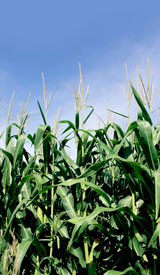May 20, 2008
Contact: Kevin Iungerman, 518-885-8995
NNY Research Hits Upon Novel Weed Control Measure for New Grape
Growers
One of the outcomes to date from the cold-hardy wine grape research is a
novel practice for weed control when establishing new vineyards. A full
report of the trial at the Cornell University E.V. Baker Agricultural
Research Farm in Willsboro is online on the Northern New York
Agricultural Development Program website at
www.nnyagdev.org.
More information on these Northern New York grape trials will be
highlighted at the �Cold Climate Viticulture: Wines and Vines in the
North Country� conferences are set for June 4 at Noblewood Park in
Willsboro, NY, and June 5 at Cornell Cooperative Extension of Jefferson
County in Watertown, NY.
Funding from the the Northern New York Agricultural Development Program
helped establish the 300-vine vineyard trial of 25 cold-hardy wine grape
cultivars at the Baker farm in 2005. Since then, the farmer-led regional
agricultural research, education and outreach and small grants program,
the New York Farm Viability Institute, and volunteer growers have
assisted research work at the Baker farm.
The trials are evaluating yield, quality and growth performance
measures; and winter acclimation and survival rate.
�Serendipitously, in 2007, we hit upon a novel way for dramatically
reducing conventional weed control measures in young vineyards,� says
Willsboro project leader Kevin Iungerman, an Extension Associate with
the Cornell Northeast NY Commercial Fruit Program.
�Our previous weed control regimen combining raised beds, the use of
plastic mulch at planting, alley mowing and weed-whipping missed weeds
along the edges. In 2007, we tried a different combination of practices
to arrest vegetation between the mulch and the mowed alley,� Iungerman
explains.
�We used a single RoundUp application when the vegetation edge was
approximately seven to 15 inches high. Subsequent alley-mowing
discharges helped topple the killed grass onto the plastic mulch,
shading it from ultraviolet light and photo-degradation. The end result
is that the pre-planting plastic from 2005 was still functioning as an
effective weed control through 2007, and likely will into 2008,� he
says.
Iungerman says using this technique considerably extends the life of the
mulch material used by vineyard managers. He also says having the Lake
Champlain Grape Growers Association member volunteers regularly on site
in the Willsboro vineyard went a long way toward convincing them of the
utility of this newly-discovered weed control practice.
�With this Northern New York grape trial we are filling in much of the
information void about growing hardy hybrid grapes in Northern New York
with research-tested information based on side-by-side comparisons
produced under local conditions. And,� Iungerman adds, �regional grape
enthusiasts are learning by seeing and doing in the research vineyard as
well as their own private vineyards.�
2008 research funded by the NNYADP is evaluating rigorous cropping
performance in anticipation of creating five finished Northern New York
wines from the Willsboro grape trial under the auspices of the Cornell
Wine Lab.
Weed control, including how to use integrated pest management, will be a
topic at the June 4-5 �Cold Climate Viticulture: Wines and Vines in the
North Country� conferences to be held respectively in Willsboro and
Watertown. The $50 conference registration includes lunch, the vineyard
tour and a CD-ROM with presentations and information. Register by May
30; space is limited. For the Willsboro program, contact 518-885-8995;
for the Watertown program, contact 315-788-8450. A complete report of
the Willsboro trial is on the Northern New York Agricultural Development
Program website at www.nnyagdev.org.
# # #



